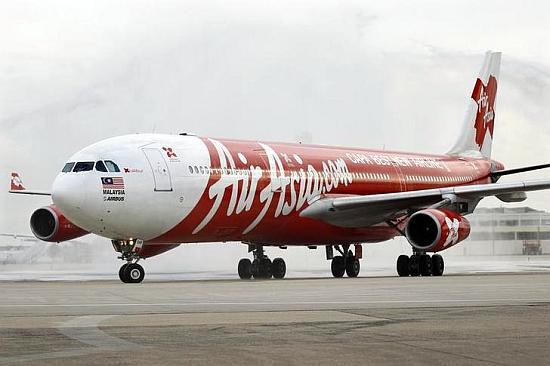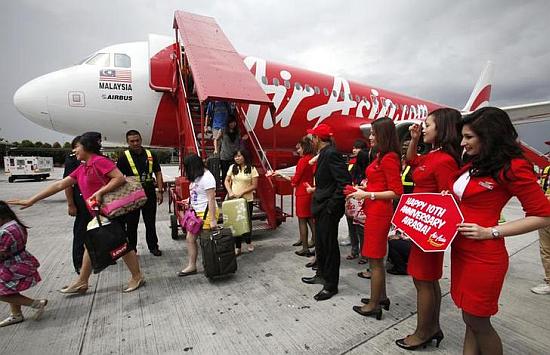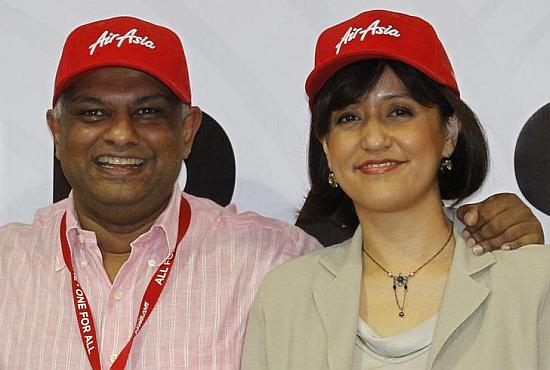 | « Back to article | Print this article |
Can AirAsia compete with existing low cost airlines?
That AirAsia will fly the domestic skies is old news. The question everyone watching the company's India story unfold is asking is simple: What will the airline stand for?
In a market that has its own share of low-cost carriers (LCCs) such as IndiGo, SpiceJet, Jet Airways' Jet Lite and GoAir, providing the lowest airfare is simply not sufficient. There needs to be something more.
Earlier this week, SpiceJet's Chief Executive Officer Neil Mills had said, "Airlines in India are not allowed to charge a fee for baggage or preferential seats. The Aircraft Rules of 1937 do not allow it."
He was referring to AirAsia's reliance on ancillary revenue. The airline will have to look at creating a distinctive identity to compensate for the absence of this ancillary-revenue stream.
Says Nalin R Khanna, president, Vertebrand, a brand consultancy firm, "One cannot create a brand identity on the basis of just the gap in the market. There needs to be a definitive differentiator in the value proposition of the company."
Click NEXT to read more...
Can AirAsia compete with existing low cost airlines?
He draws his suggestions from the company's business plans for the Indian market. The airline has announced they would avoid the Mumbai-Delhi circuits to keep the operational costs low, concentrating on Tier-II and Tier-III towns instead.
"In the small sectors, a cause of concern for the fliers is the absence of an assurance that the said flight will even take off. Look at the busier airports and there are multiple flights at different times during the day. Smaller airports have less cluttered flightboards. There may even be a single flight taking off in a day. And, if that doesn't happen, one is stuck. AirAsia can build itself as a reliable player that will ensure operational efficiency," says Khanna.
Click NEXT to read more...
Can AirAsia compete with existing low cost airlines?
Brand identity percolates from the entire experience one has with the brand. It begins with the check-in counter and extends to the time you disembark at your destination.
Designing the facilities distinctively, paying attention to the visual identity will come in handy in establishing oneself in the minds of the passengers suggest brand consultants.
Apart from its international success, what AirAsia has going for it is its tie up with the Tatas in India. Jagdeep Kapoor, chairman & managing director, Samsika Marketing Consultants, suggests using this tie-up in the company's identity building.
"If it (AirAsia) can use the Tata name as a prefix or suffix or in some manner at all in its communication / brand identity, it will get a major fillip on the credibility aspect," he says.
Click NEXT to read more...
Can AirAsia compete with existing low cost airlines?
While Mills pointed out AirAsia would have to do without its ancillary- revenue streams such as charging for check-in luggage, Alpana Parida, president D Y Works, suggests adding some frills to the no-frill chapter - bring back the food.
"Indians love food. And food for us is the equivalent of good hospitality. AirAsia can distinguish itself on this parameter. What we need is not the sanitised sandwiches but something more suitable to the Indian palette. If they succeed on this count, you have a winner. The flier may forget everything but not the food he's been served," says Parida.
She suggests a wider change in AirAsia's branding stance, giving India a permanent position in its roster. She points out when the West says Asia, they always speak of South East Asia. India is never considered a part of it. It is always the Indian subcontinent. "If AirAsia can, in some way, create an all- inclusive Asian brand identity, Indians will find it far more comforting to accept the airline and relate to it."




